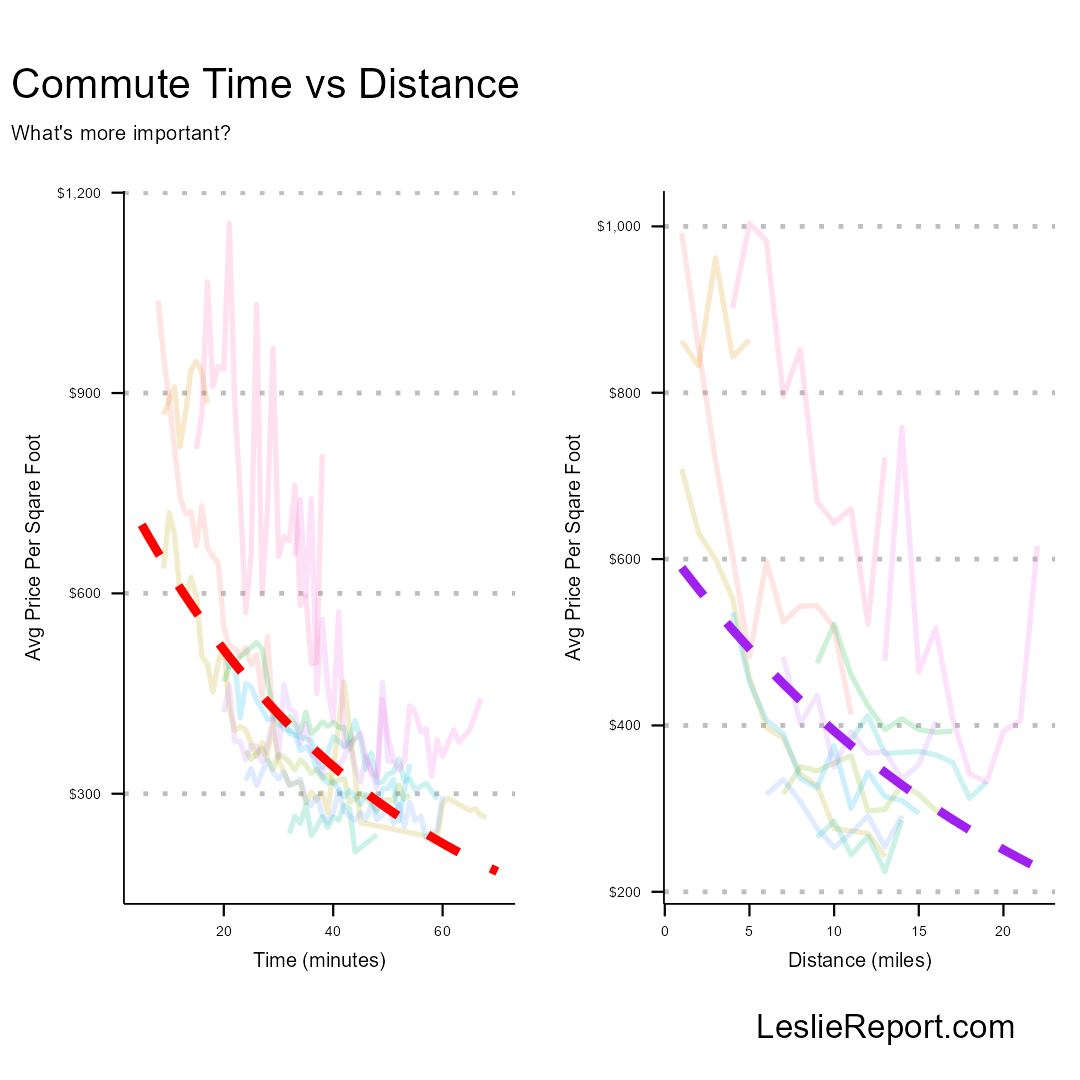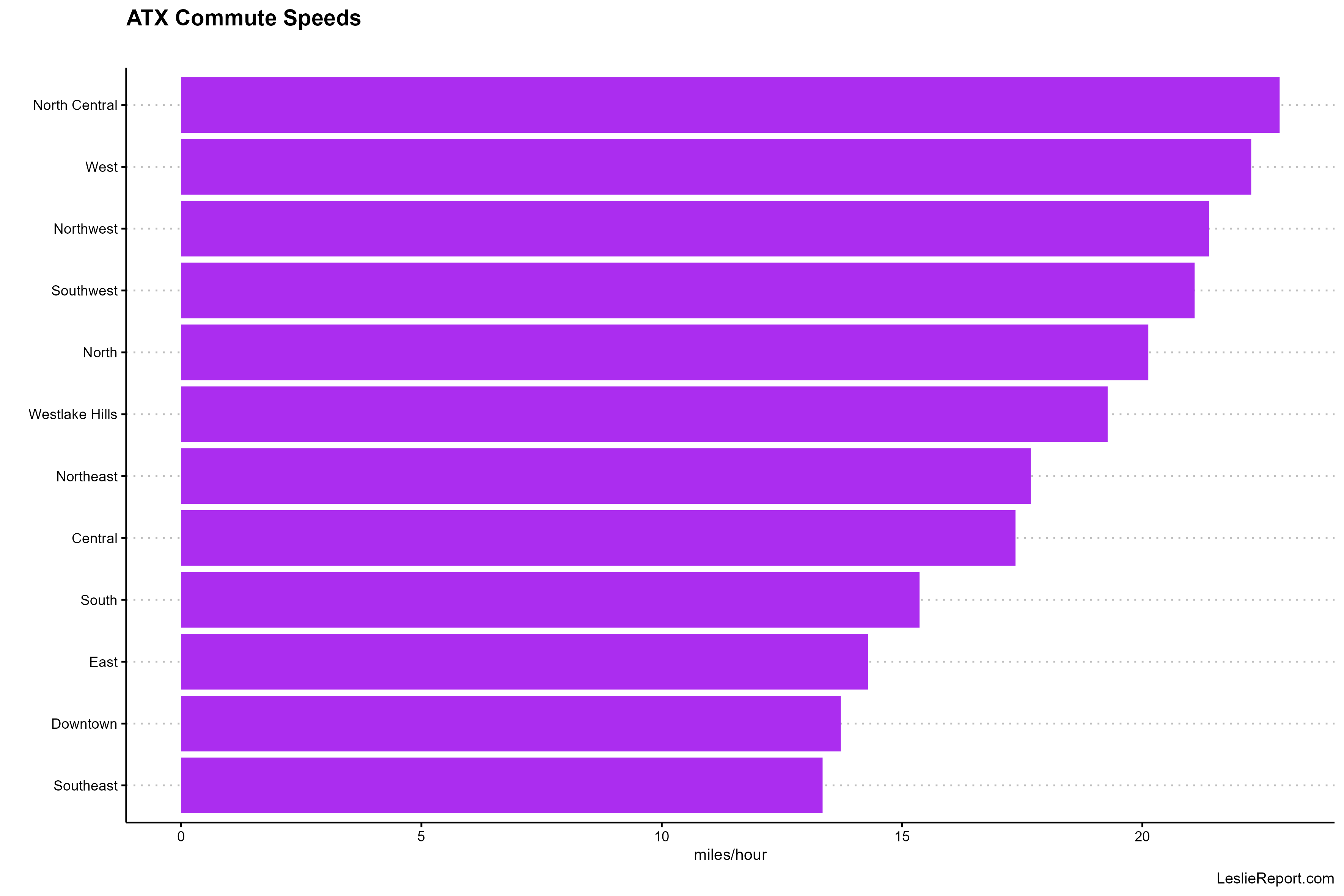Commute Impact on Asking Prices
fmarquez | Jan. 25, 2023, 2:56 a.m.
We all know location is one of the most important factors when purchasing a home. For those who commute to work, the definition of 'good location' can be greatly influenced by the commute to work. However, how important is it? In this post I aim to quantify the importance of the commute on the asking prices of new listings. In this post I explore the commute in both miles & minutes, and see which one (if any) carries a stronger weight.
Before we proceed, it is important to clarify the following assumptions I made.
The first one comes in defining a commute. While I do not know where people work, I do know many people work downtown, so I'll make the assumption every home buyer will commute to downtown. Specifically, I chose the Frost Bank Tower because it is in the middle of downtown, and there are huge parking lots in the area.
The second assumption is time. As we all know traffic can be very different at different times of the day and days of the week. To standardize all commute times, I chose the travel time to be 8:00 am on a non-holiday Wednesday.
An easy way to measure the impact of time or miles on the price of property is to create 2 models where each model uses either commute time (minutes) or distance commute (miles) to predict the price per square foot for new listings. The factor used in the better performing model can be thought of as the most influential factor. Outside of commute factors, there are other factors like square footage, floors, rooms, build year, etc that can influence the price. In order to reduce some of the noise, I chose price per square foot instead of asking price for our models. This decision helps eliminate the noise stemming from bigger houses being valued higher than smaller houses. Keep in mind this is directional, no way a single feature should be the determining factor in valuing a home.
In the graph below we can see the actual data plotted with the modeled data (dashed lines). The background lines represent the different neighborhoods we discuss in this blog.
 At first glance, both models look off, and that is expected. We know there's many factors going into the price of a house, and the commute is just one of them. Furthermore, we know not everyone is interested in commuting downtown, so getting an accurate model by using just one feature would've been surprising.
Looking closely into it, we can see how the fit of the Time (right) plot is tighter than the Distance (left) one. This is essentially what the Adjusted R2 statistic tells us. 40% of the variance in price can be attributed to commuting time, which is almost double the predictive power of distance!
Time of commute seems deeply embedded in the asking price of new listings. More so, than distance. If you’re on the market for a new home, I would recommend looking at the commute times you’re interested in, but consider the times you’ll be commuting. When looking at houses, it is common for the description to include stuff like “10 minutes from Downtown”, “15 minutes from Domain” or “5 minutes to the airport”. They could be true, but at what time is this commute taking place? Many of those commute times will be laughable if you have a 9-5 schedule. If you’re planning on commuting downtown, you’re in luck! We have the times already computed in the dashboard section here.
Now that we know the value of a short commute, let’s look into which neighborhoods have the shortest commute times. The graph below plots the commute times we’ve measured since the start of our project (about 10k properties). Not surprising, Central, Downtown and East have the shortest commutes while Northwest, West, and Southeast have the longest commutes.
At first glance, both models look off, and that is expected. We know there's many factors going into the price of a house, and the commute is just one of them. Furthermore, we know not everyone is interested in commuting downtown, so getting an accurate model by using just one feature would've been surprising.
Looking closely into it, we can see how the fit of the Time (right) plot is tighter than the Distance (left) one. This is essentially what the Adjusted R2 statistic tells us. 40% of the variance in price can be attributed to commuting time, which is almost double the predictive power of distance!
Time of commute seems deeply embedded in the asking price of new listings. More so, than distance. If you’re on the market for a new home, I would recommend looking at the commute times you’re interested in, but consider the times you’ll be commuting. When looking at houses, it is common for the description to include stuff like “10 minutes from Downtown”, “15 minutes from Domain” or “5 minutes to the airport”. They could be true, but at what time is this commute taking place? Many of those commute times will be laughable if you have a 9-5 schedule. If you’re planning on commuting downtown, you’re in luck! We have the times already computed in the dashboard section here.
Now that we know the value of a short commute, let’s look into which neighborhoods have the shortest commute times. The graph below plots the commute times we’ve measured since the start of our project (about 10k properties). Not surprising, Central, Downtown and East have the shortest commutes while Northwest, West, and Southeast have the longest commutes.
 Things get a bit more interesting when we look at the average speed for various neighborhoods. Southeast and South have the slowest commute speeds. My best guess is this is attributed to the infamous I-35. Unlike West & North, there is no alternative road to take and I-35 is the only option to get to downtown. What this means is if you’re commuting to work, you will be traveling with all the 18 wheelers and trailers trying to cross the city as well with the southern neighbors of Buda, Kyle, New Braunfels, and San Marcos.
Things get a bit more interesting when we look at the average speed for various neighborhoods. Southeast and South have the slowest commute speeds. My best guess is this is attributed to the infamous I-35. Unlike West & North, there is no alternative road to take and I-35 is the only option to get to downtown. What this means is if you’re commuting to work, you will be traveling with all the 18 wheelers and trailers trying to cross the city as well with the southern neighbors of Buda, Kyle, New Braunfels, and San Marcos.
 I hope this was helpful. The main takeaway is that commute time matters and mileage does not(at least not as much).
I hope this was helpful. The main takeaway is that commute time matters and mileage does not(at least not as much).

